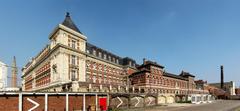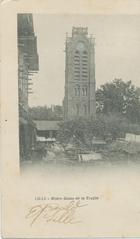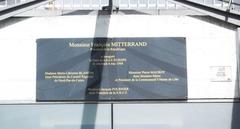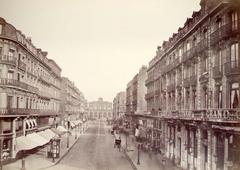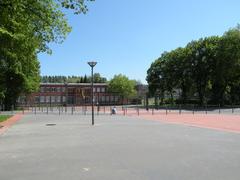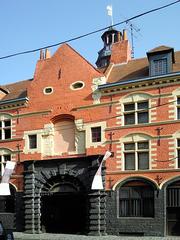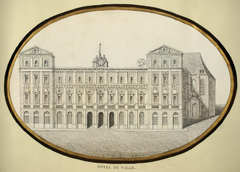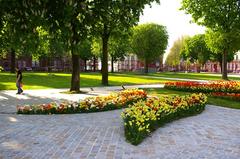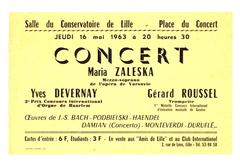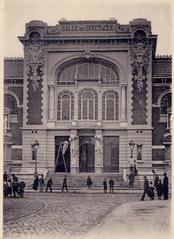Porte d’Arras Lille: Visiting Hours, Tickets, and Historical Site Guide
Date: 04/07/2025
Introduction
Porte d’Arras, situated in the southern part of Lille, France, is a landmark steeped in history and urban evolution. Although the original city gate was demolished in the 1930s to accommodate modern development, its legacy endures. The name “Porte d’Arras” not only designates a pivotal area in Lille’s urban landscape but also connects past and present as a symbol of transition, accessibility, and community. Today, the neighborhood and its metro station serve as a vital hub, offering a blend of historical resonance and contemporary vibrancy. Whether you are a history enthusiast, a commuter, or a traveler seeking convenient access to Lille’s southern districts, Porte d’Arras provides a unique window into the city’s heritage and ongoing transformation (Good Morning Lille, World Travel Guide).
Historical Background
Origins and Construction
The original Porte d’Arras was constructed in the mid-19th century during Lille’s significant expansion under Napoleon III. This period saw the annexation of several surrounding villages—including Moulins, Wazemmes, Fives, and Esquermes—requiring new gateways to facilitate movement and trade. The gate, unadorned and functional in design, was erected at the southern edge of Lille to serve as a key access point toward Arras and the newly integrated suburbs (Good Morning Lille).
Strategic and Urban Role
Strategically located at what is now Place Jacques Febvrier, Porte d’Arras acted as a crucial transition point for people and goods moving between Lille and its southern outskirts. It was flanked by major thoroughfares and adjacent to a customs house, underscoring its role in trade regulation. Over time, the area became a vibrant hub, with trams and trains converging near the gate, and the Moulins district growing up around it (Good Morning Lille).
Demolition and Urban Transformation
By the 1930s, Lille’s obsolete fortifications and gates, including Porte d’Arras, were demolished to make way for new housing and infrastructure. The site evolved with the construction of the Marcel Bertrand housing complex and, later, the southern ring road. Today, the name survives through the metro station and neighborhood, symbolizing both heritage and urban progress (Good Morning Lille).
Visiting Porte d’Arras Today
Opening Hours and Ticket Information
-
Porte d’Arras Neighborhood and Metro Station:
Open to the public year-round, 24/7. There is no entrance fee to visit the area. -
Metro Service:
Operates daily from approximately 5:30 AM to midnight. Metro tickets can be purchased at stations or via the official Lille transport app (Lille Tourism). -
Guided Tours:
Guided walking tours including Porte d’Arras are available via Lille Tourism and local operators, generally between 10:00 AM and 5:00 PM. Ticket prices for tours range from €10–€20; advance booking is recommended.
Accessibility and Transport
How to Get There
-
Metro:
Porte d’Arras station is served by Metro Line 2, providing frequent connections to central Lille and other districts (fr.wikipedia.org). -
Bus:
Multiple lines pass through or near Porte d’Arras, connecting to various city neighborhoods. -
Car:
Easily accessible via Boulevard de Strasbourg. Parking is available nearby, though limited during peak hours. Park-and-ride facilities are recommended for visitors driving into the city (World Travel Guide). -
Bicycle:
Lille’s V’Lille bike-sharing stations and dedicated cycling lanes make cycling a convenient option.
Accessibility
The metro station and public facilities in the area are equipped with ramps, elevators, and clear signage, ensuring accessibility for visitors with reduced mobility.
Points of Interest and Nearby Attractions
-
Citadel of Lille:
A renowned Vauban fortress, located about 2 km north. -
Porte de Paris:
An ornate historic city gate, showcasing Lille’s architectural heritage. -
Moulins District:
A multicultural neighborhood with vibrant street art, markets, cafes, and local events. -
Place Jacques Febvrier:
Known for its unique blue-painted surfaces and community activities (actu.fr). -
Palais des Beaux-Arts:
One of France’s premier art museums, easily accessible by metro (The Crazy Tourist).
Community and Culture
Porte d’Arras is more than a transit hub—it is a living neighborhood reflecting Lille’s working-class roots and multicultural spirit. Local bakeries, markets, and eateries offer tastes of French and international cuisine. Community groups preserve local history and foster a sense of belonging, while upcoming developments like the new Piscine Porte d’Arras swimming complex signal continued investment in the area’s future (Vozer, Hauts-de-France).
Facilities and Practical Tips
-
Food & Shopping:
Local shops, supermarkets, bakeries, and cafes are abundant. The city center and Wazemmes Market are a short metro ride away. -
Parking:
Street and public parking are available, but using park-and-ride options is recommended during busy periods. -
Accommodation:
While few hotels are located directly in the Porte d’Arras area, a wide range of accommodations are found in central Lille and Old Town. -
Safety:
Porte d’Arras is a lively, generally safe area. Standard precautions apply, especially during evenings and major events (Reddit). -
Events:
The area is a strategic access point during citywide events such as the Braderie de Lille (Europe’s largest flea market) and other festivals (French Moments).
Frequently Asked Questions (FAQ)
Q: Are there specific visiting hours or entrance fees for Porte d’Arras?
A: The neighborhood and metro station are open to the public at all times and free to access.
Q: Is Porte d’Arras part of guided city tours?
A: Yes, many walking tours include historical context about the area. Book through Lille Tourism or local operators.
Q: How do I get to Porte d’Arras using public transport?
A: Take Metro Line 2 to Porte d’Arras station, or use intersecting bus lines.
Q: Is the area accessible for those with reduced mobility?
A: Yes. The metro station and public amenities are equipped for accessibility.
Q: What new attractions are coming to the area?
A: The Piscine Porte d’Arras, a state-of-the-art swimming complex, is under construction and expected to open in late 2025 (Hauts-de-France).
Summary and Final Tips
Porte d’Arras, though no longer marked by its original gate, continues to be a dynamic crossroads in Lille—blending historical significance with modern convenience. The area offers free and open access, excellent public transport, and proximity to top city attractions. Ongoing developments, such as the new swimming complex, signal a commitment to accessible community amenities. Whether you’re exploring on foot, by bike, or via metro, Porte d’Arras is both a literal and symbolic gateway to the best of Lille (Good Morning Lille, World Travel Guide).
Sources
- Good Morning Lille
- fr.wikipedia.org
- World Travel Guide
- Hauts-de-France
- Vozer
- Lille Tourism
- actu.fr
- The Crazy Tourist
- French Moments
- France Voyage
- Moovit
For more travel tips on Lille’s historic and cultural sites, download the Audiala app and follow us on social media for the latest updates and insider advice.
